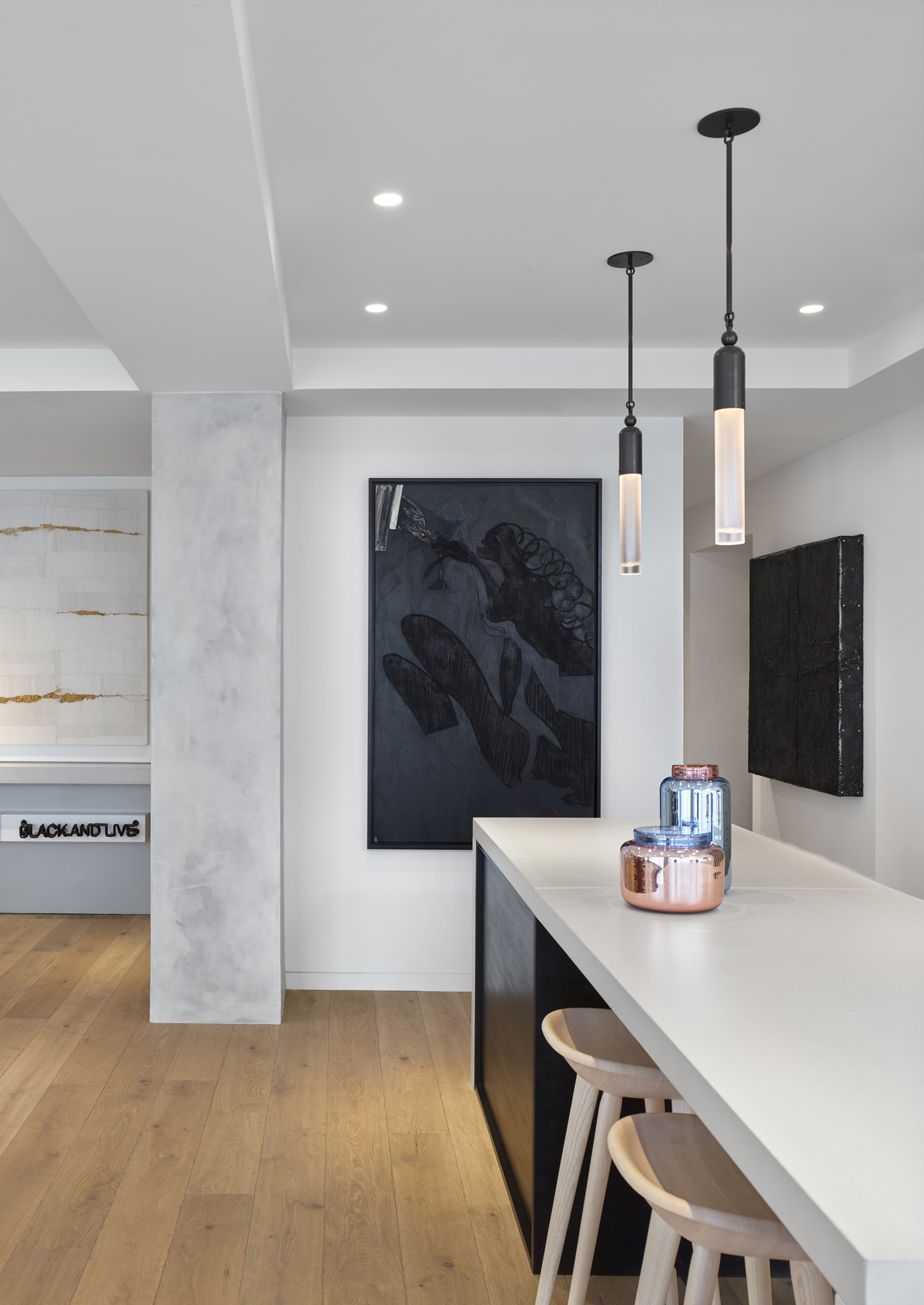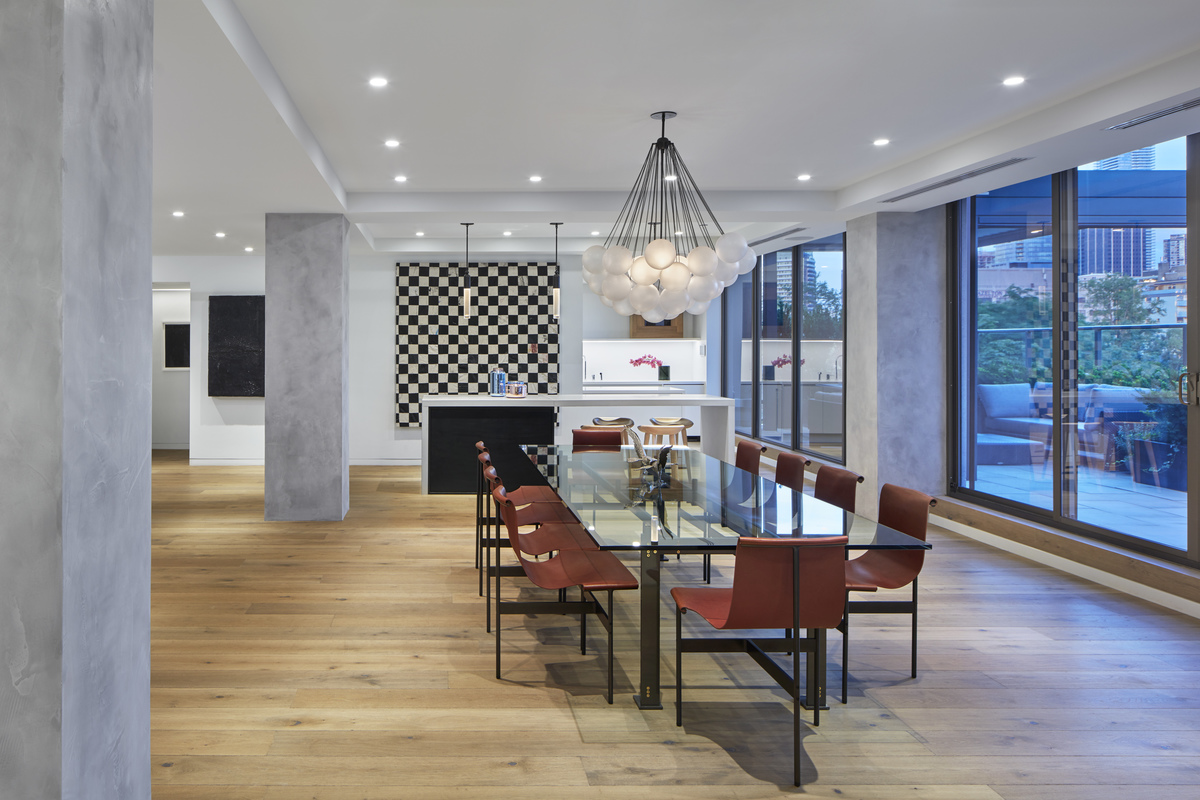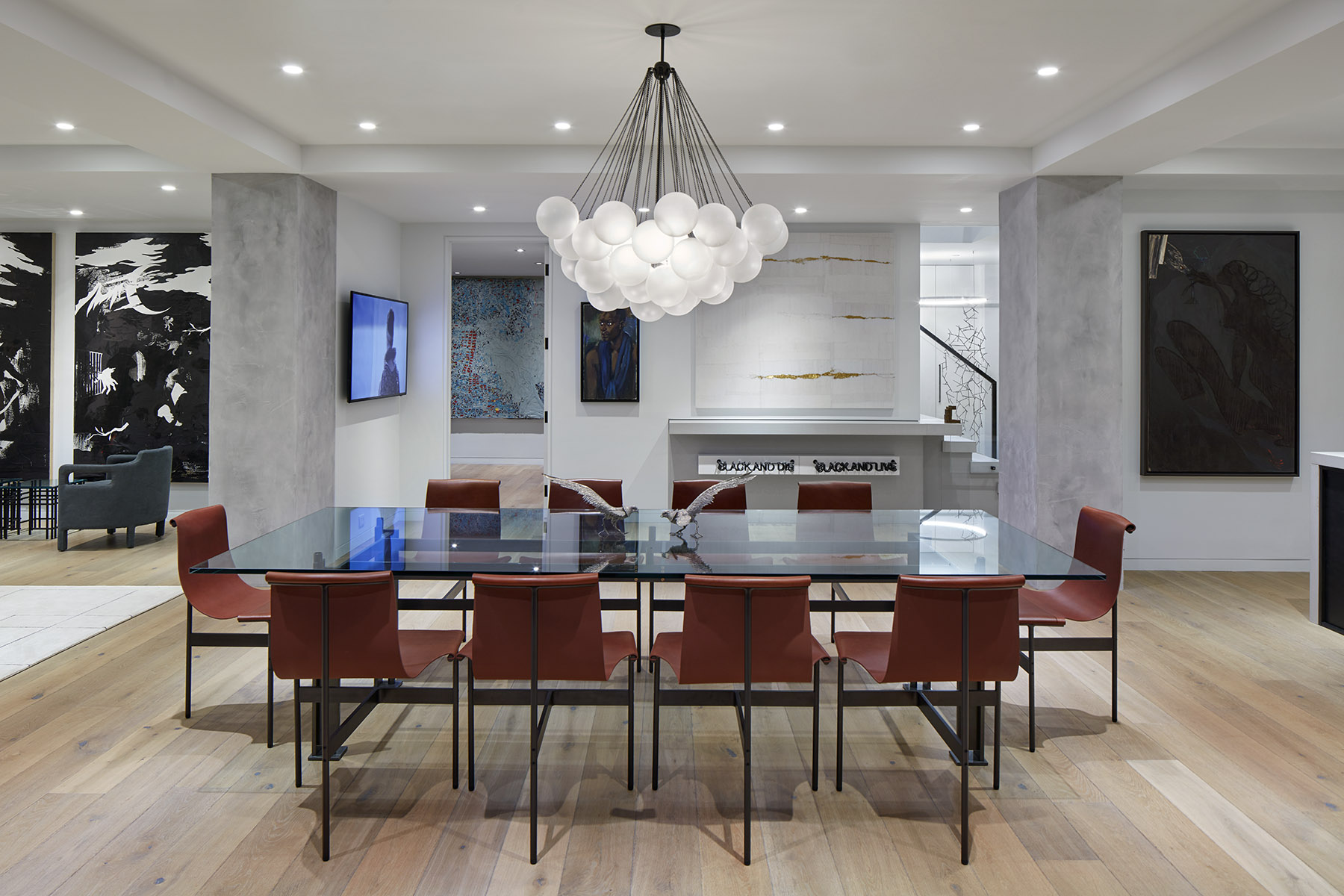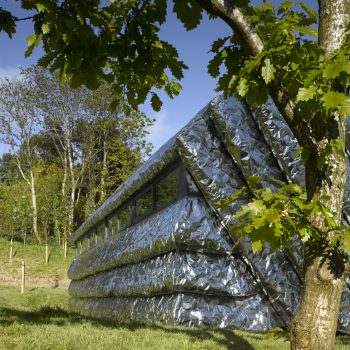_______________________________________________________
Published in Art Market Magazine Feb 2021 issue
 Roundabout Studio: Art and architecture in symbiosis
Roundabout Studio: Art and architecture in symbiosis
View full article here
____________________

Art Market Magazine Feb 2021
__________________________________________________
A stunning architecturally designed home in Yorkville Toronto pays homage to an impressive art collection.
____________________
By way of introduction, Yorkville’s ‘artistic’ history as it played out in the 1960s and 1970s precedes it in 2021 as a continuum, with ‘counter culture’ at one end and gentrification at the other.
At that time the area was characterised by a burgeoning music, literary and visual arts scene. During the decade from c1960 to c1970 disaffected youth from Toronto predominently and the wider region flocked to Yorkville seeking selfhood and an inclusive collective mindset: graphically disowning the stultifying restrictions the dominant ‘conservative’ culture placed upon them. In Yorkville they found a powerful sense of identity and place where experimentation and alternative lifestyles were the norm.
Indeed, by 1964 every young Torontonian (and many young Canadians) likely knew that social rebellion and Yorkville went together as fingers interlaced.
Yorkville was special: two seminal films investigated the counter cultural and hippie movements, Flowers on a One Way Street 1968 & Christopher’s Movie Matinee 1968 both under the auspices of The National Film Board of Canada.
More recently, Artcetera: Narrativising Gentrification in Yorkville, Toronto, Vanessa Mathews discusses the extremes of Yorkville’s character. While Yorkville’s experience might be more pronounced, similar circumstances can be found the world over, London’s Hackney and Newham, Melbourne’s Fitzroy and Collingwood and Auckland’s Ponsonby are prime examples.
Inferentially, a capsule of that legacy lives on in Yorkville Condo by recourse to the timbre of the collection it houses.
It is alluded to at once obliquely, serendipitously and ironically in the following description of a work found in the Condo’s Master bedroom: Rachel Whiteread represents an inverted bookshelf that’s symbolic of forgotten history and memory.
_______________________________
Within the architectural discipline, the role architecture plays in establishing a ‘a sense of place’ (failures and successes) is an issue rountinely discussed in the media, especially in the last decade.
It would be easy for the uninitiated to overlook that aspect here when art is so obviously the star performer, yet the architecture does in fact strongly define a unique sense of place. It is inherent in the mellifluous connection to both the inhabitants and the role they played in the design process – the circumstances overlayed with the exigencies of the collection itself: the two disciplines working together ‘as fingers interlaced’.
The collection foregrounds this concept by recourse to the architectural spaces, their intricacies and characteristics.
Although the condo living areas are relatively compact, careful space definition and distribution means it is divided into alternating lush and more or less spartan environments in a natural progression. Each zone has a distinct personality by dint of the architecture alone and is enriched specifically by the placement of the works.
In spite of the minimal palette and forms a feeling of homeliness is derived simply from a mix of quality materials: French tumbled oak floors, timber stools, rich yet few individual furnishings, and a distinct connection to the outdoors. Neutral flooring and a ‘sliding grey palette’ add visual warmth and faint pattern.
Additionally and subliminally the history of Yorkville (added to singularly in this context), hovers knowingly in the background, the grandparent to the child contributing to the distinctiveness of place.
Whilst the Schwartz have brought their own personalities to the interiors in ways beyond the collection itself, they have also consciously bought into the history of Yorkville via the avant-garde collection on one hand and their decision to live in Yorkville on the other. Acknowledging the quote below refers to cities it equally applies here.
This sense of returning to the place frequently and having that deep connection with the place makes the ‘space’ become a ‘place’ of meaning and connection.
Moreover, the ‘meaning’ does not remain static, it is by definition flexible in accord with lifestyle and changing circumstances, and is dictated by and imbued with both spontaneous and cultivated realisations.
_______________________________
“There’s a curatorial story here. It isn’t just what fits where; it’s a dialogue in the same way a gallery would do a show,” says Alison.
 While it is clear the internal design was driven by accommodating Alan and Alison Schwartz’s significant art collection in a ‘curatorial manner’, the relationship between the two disciplines is one of symbiosis. That is the collection displays seamlessly by means of a congruent architectural response.
While it is clear the internal design was driven by accommodating Alan and Alison Schwartz’s significant art collection in a ‘curatorial manner’, the relationship between the two disciplines is one of symbiosis. That is the collection displays seamlessly by means of a congruent architectural response.
Ironically, there is an impression of flexible, expansive wall space which, on closer inspection, is strategically finite: on the ground floor at least. The design details not only support considered curation but enable solitary works to animate cryptically in particular circumstances, depending on their position. The neutral wall space (in turn both restrictive and elastic) makes this goal eminently possible.
______________________________
 Words like dynamic and strident might spring to mind as arbiters of the atmosphere initially, the mood in fact is more subtle. It is rich and enveloping yet not prohibitive. Not unlike a predominently smooth flowing river interrupted by the odd tributary that disrupts the hitherto uncomplicated flow.
Words like dynamic and strident might spring to mind as arbiters of the atmosphere initially, the mood in fact is more subtle. It is rich and enveloping yet not prohibitive. Not unlike a predominently smooth flowing river interrupted by the odd tributary that disrupts the hitherto uncomplicated flow.
The above image provides an expression of viewing points within an architectural context. The view into the kitchen focuses the chandelier in relief, as a ‘soft’ rounded object, against a visually bold chequerboard work by artist Oscar Murillo in the background: hence lustrous and gentle contiguous with spirited and compelling.
____________________________________________
The architecture supports both concepts – the black rectangle internal to the island bench works coefficiently with the chequered work; spontaneously educating the viewer to the ineluctable relationship between the art and the architecture.

Moreover, as the viewer approaches the chequered work it reveals an aesthetic and textural softness not discernible from a distance: a surprising element in keeping with the timber framed work in the kitchen proper.
This, along with the work parallel to the Murillo, represents a coup by the design team because it reveals revolving positive and negative spaces sequentially striking and delicate.
The ‘active’ position provides a conspicuous counterpoint to the ‘empty space’, which occurs by recourse to white layering and is articulated by the equally arresting ‘lone pendant’.
____________________________________________
For us, how they approached their collection was one of the defining characteristics of this project. From sight lines to space planning, the eye is consistently led back to where it should be — the art.

The demarcation of space (physical) and art (which encompasses united physical, conceptual and psychological aspects) is organised so that both are appreciated in chorus which makes the experience of daily habitation richer, perpetually enticing and always surprising.
And
Yet the condo also had to feel comfortable and homelike. A place to unwind after a hectic day.
________________________________
 The kitchen and dining areas are ideal spaces to make a point about the way in which architecture and art inform each other positively. The ambiance is one of subtly adventurous, yet original sophistication.
The kitchen and dining areas are ideal spaces to make a point about the way in which architecture and art inform each other positively. The ambiance is one of subtly adventurous, yet original sophistication.
As a corollary, many of the represented artists such as Sigmar Polke, Chris Olfili, Zanele Muholi (for one reason or another), represent the vanguard of their respective diachronic positioning within the art world.
____________________________
The wall is as important as the work.
 Christie’s Marc-Olivier Wahler emphasises the importance of wall space when hanging art,
Christie’s Marc-Olivier Wahler emphasises the importance of wall space when hanging art,
The presence of the windows and doors, the height of the ceiling, the quality of the floor, the electrical plugs and switches, etc — they all have an impact on the way the spectator will interact with the works.
‘Negative space is, to me, one of the most unevaluated elements when it comes to placing several artworks together,’ comments Wahler. ‘What is the space in between each work?
Throughout negative and positive space is enfolded within a lyrical sequence of horizontals and verticals. These geometric components are balanced within a collaborative ‘one off’ architectural and installation language. Additionally, material textures punctuate and project alternately in accord with the pendant light, timber framed work and stools – these aspects communicate specifically and harmoniously.
____________________________________________

____________________________________________
The same can be said of the view in the opposite direction, albeit not as dramatic. This view conveys a distinct personality – the intervening space is warm, understated and variously textured: as such the viewer is put in a more mellow, relaxed frame of mind.
The ‘bubble chandelier’ above the dining table implies animated, witty and continuous (yet discrete) conversation. It also implies the bubbles of champagne which undoubtedly flow around this table, on the topic of art in all its manifestations.
____________________________________________

The living room projects as a floating oasis of delicate urbanity. At once sedate and affable whilst gently avant-garde in the spirit of the art collection.
Notwithstanding a melodious milieu, multiple subtle contrasts and contexts are set up that work seamlessly with the architecture. Accordingly, Roundabout Studio was called upon to create
…a trio of highly custom resin and walnut coffee tables in teal and smoke specifically for the formal living room.
a compositional counter to the geometric line and rectangular forms in the rug, the lamp and the art works.
Indirectly, the linear connections detailing the rug mirror both a mindset of endless enquiry and the simple geometries the architects employed to house the collection.
____________________________________________
The placement of the artworks says a lot about the inhabitants. For example, consider the dynamic work in the kitchen as well as that at the foot of the stairs – they are powerful defining pieces which compel viewing.
The restrictive hanging space contributes to their force as objects of contemplation. Whether consciously or not, the positioning reveals a little of the inhabitant’s character – hanging of this kind speaks to collectors who value not only their art but the domestic dialogue it generates.
Similarly, hanging the work by Adam Pendleton in the Ensuite bathroom is both obvious for the collectors and personal: at the same time engagement is promoted by the presence of a captive audience as abultions are conducted.
Although both visually sedate and dynamic it is not only a formal nod to poetry but is aesthetically enveloped within a poetic language of art in general.
Hanging The Man in the Ensuite references Pendleton’s propensity for investigative poetic gestures and dialectic, and the challenging of historic and literary conventions including that of textural ownership. Add to that a predilection for layering and juxtaposing imagery and text a-contextually and there is reason to believe this work could be hung in no other place – initially at least to realise the full impact. The fact that the Ensuite has no door is a subtle endorsement of this hang.
____________________________________________
At first glance the stairwell appears uncomplicated yet it too is an object to reflect upon – an ingenious design that imparts subtle charisma and theatrics.
Transmitting both smooth and compelling authority, the staircase is at once minimally enclosed and rhythmical.

Surrounded on all sides by art, a fine quality of osmosis exists between the approximal works and the understated drama of the staircase.
Part of the magnetism is the sculptural quality derived from the rhythmic recesses under each step in accord with the width of the step itself. Paired extensions on opposite sides contribute to the interaction of art and architecture.
Giorgio di Antonio Vasari emerged in the 1530s as an architect, painter and art historian. His encyclopaedic Lives of the Most Eminent Painters, Sculptors, and Architects; known as The Lives is legendary and was one of the first treatise resembling what we formally refer to as ‘art history’. Relevant because it directs us to a quote by Vasari on architecture,
Every part of the staircase must make a princely appearance, since most visitors see no more of a house than the staircase.
Doubtlessly the quote retained more currency in reference to 16th century villas and beyond than those of the 21st century, nevertheless it draws attention to an inescapable fact: residences of more than one story must have a staircase.
Walking towards and passing by artworks on a virtual sculptural continuum, the staircase is a discrete aesthetic experience in itself.
____________________________________________
____________________________________________
Daniel Harland from Roundabout Studio,
We wanted it to be modern and contemporary, but not flashy. A place that had a quiet, almost Zen-like feeling.
___________________________
Yorkville Condo is a retreat embodying refined communication and conversation – a place to call home, worthy of its unique place in Yorkville’s rich history.
____________________________________________
Click on the images by Shai Gil for greater definition!
Unless otherwise stated, all images are by Shai Gil.
____________________________________________
____________________________________________
____________________________________________




















